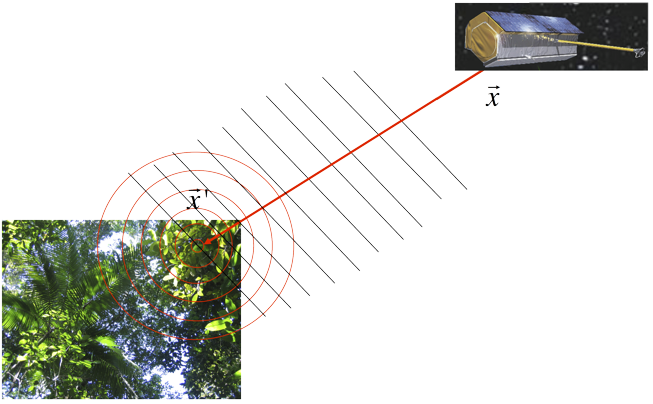HMC Physics Colloquium
Tuesdays at 16:30 in Shanahan Center for Teaching and Learning, Room B460
Robert Treuhaft
Jet Propulsion Laboratory
The Physics in the Forest: Remote Sensing of Tropical Forests with Interferometric SAR and Lidar
March 26, 2013
When trees are cut down, they release their carbon to the atmosphere in \( \mathrm{CO}_2 \). After fossil fuels, deforestation is the second largest anthropogenic contributor to atmospheric \( \mathrm{CO}_2\). Tropical forests contain about 50% of Earth’s forested biomass, and they account for most deforestation. The degree to which a forest is storing carbon or releasing it to the atmosphere can be remotely sensed by measurements of the forest 3-dimensional distribution of vegetation, particularly in the vertical direction. For example, taller forests store more carbon than shorter ones. 3-dimensional structure measurements made regionally and globally can help to identify patterns of carbon sequestration and release, which affect the global carbon cycle. Measurement of the distribution of vegetation in the vertical direction has only within the last 20 years been possible with the technologies of interferometric synthetic aperture radar (InSAR) and laser ranging (lidar). InSAR and lidar measurements are made by transmitting electromagnetic waves from air or space, which scatter off the vegetated surfaces and return back to the transmitter. The time it takes for a signal to return is related to the vegetation’s height above the surface, that important vertical component. This talk explains the InSAR and lidar measurements, focusing on the basic electromagnetism needed to estimate structural characteristics from the electromagnetic returns. For InSAR, the difference between the arrival time of a scattered signal at two ends of a baseline is the principal vertical indicator. For lidar, the time delay between transmit and receive is related to the altitude of vegetation above the surface. This talk also shows the interface between the physics of electromagnetic scattering and the biology of carbon storage in biomass. It further suggests the possibility of applying physics modes of analysis (e.g. Fourier analysis) to biomass measurement.



